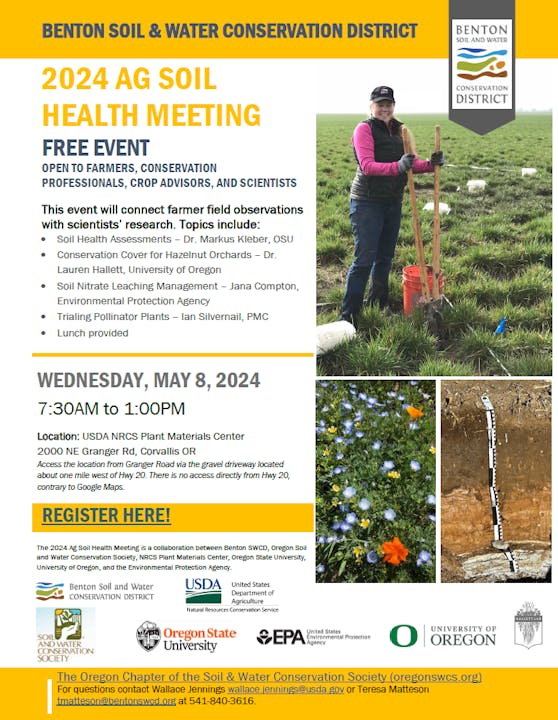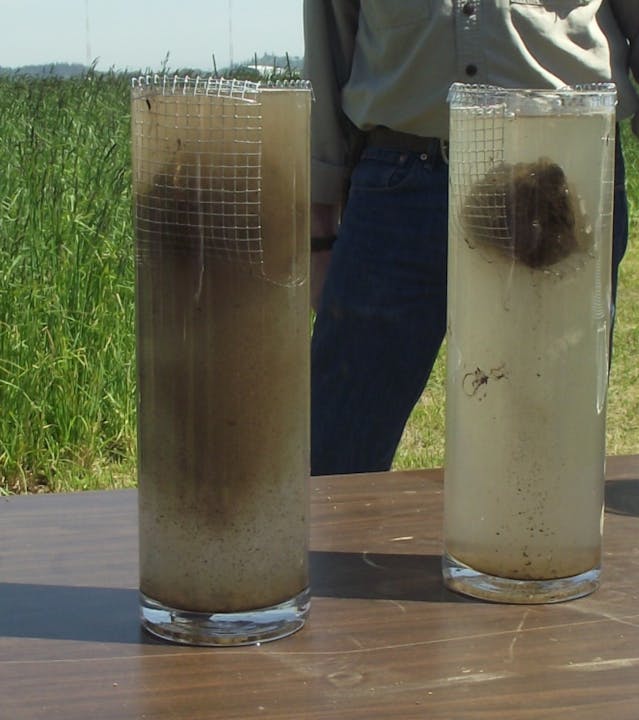The Dirt | Healthy Soil, Healthy Communities

May 21, 2024
Healthy soil is the foundation of productive, sustainable agriculture. Managing for soil health allows producers to work with the land – not against it – to reduce erosion, maximize water infiltration, improve nutrient cycling, save money on inputs, and ultimately improve the resiliency of their working land. It also leads to healthier people and communities via the very food we eat everyday. Towards this goal, on May 8th, Benton SWCD hosted an Ag (shorthand for “agriculture”) Soil Health Meeting for farmers, agency staff, and scientists.
Soil health work relies upon partnership, and this gathering was a collaboration between Benton SWCD and a number of other entities including the USDA Natural Resource Conservation Service, Oregon State University, University of Oregon, the Environmental Protection Agency, and the Oregon chapter of the Soil and Water Conservation Society. Each of these groups, along with meeting attendees, brought a wealth of knowledge and experience to bear towards a shared goal: improving soil health.
The meeting was an interactive one, which included three presentations plus a field tour of native cover crop trial plots for hazelnut alleys. Held at the NRCS Plant Materials Center in Corvallis, the location provided an exceptional opportunity for participants to visit the trial plots and discuss the pros and cons of various cover crop species. These activities pulled together many conservation concepts and practices grounded in soil health: assessments and interpretation, cover crops, native plants, nutrient management, water quality, and more.
“I can’t remember a meeting when all of the presentations were so applicable to what we are doing and interested in,” said Alex Satrum of Satrum Farms in Marion County. In all, 32 participants benefited from the insights and conversations shared at the Ag Soil Health Meeting.
Wallace Jennings, Urban and Small Farms Specialist with NRCS, added, “It was such a wonderful and needed event that made us all better in our profession as soil planners.”
Want to learn more about our local soils, how they help us, and how you can help them? Check out the links below!



